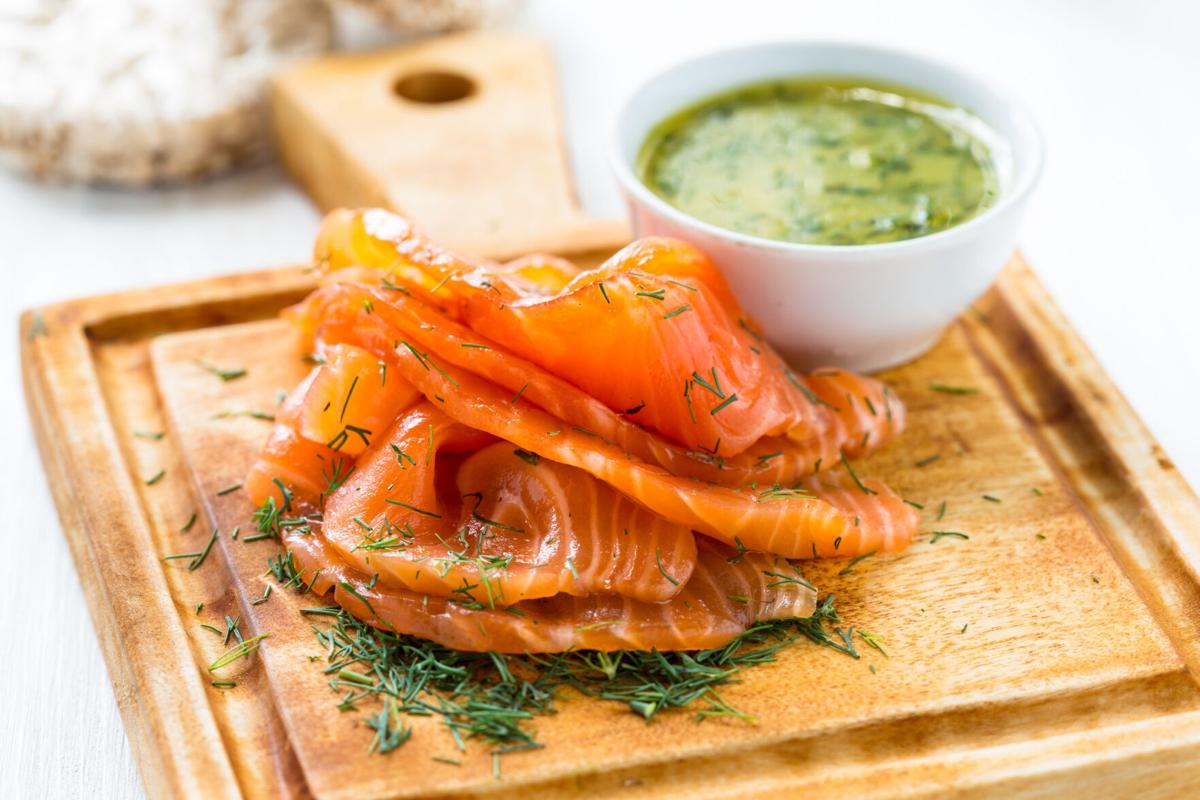I’ve been on a fresh fish kick lately and have been waiting for wild salmon season to begin so that I can prepare a favorite dish of mine.
The Scandinavian classic of salmon cured with dill is easy enough to make, but I’m finding these days that I prefer a more Sonoran-centric version — salmon cured with cilantro and chile flavors.
The flavorful sugar-salt brine “cooks” the fish in the same way that citrus acids “cook” the fish in ceviche.
In theory, you could make this any time of year if you used farm-raised salmon in the dish.
I dislike farm-raised fish for a variety of reasons, however. Some reasons are environmental, others nutritional. So I’m happy to wait for wild-caught salmon to arrive at our markets.
Stick with me for a little foray into food science.
Farm-raised salmon is fed with pellets that may include genetically modified corn and soy — not the fish’s natural diet, by any means. The corn and soy change the composition of the fish’s fats, as I’ll explain below.
Because farm-raised salmon isn’t eating the smaller fish that are the salmon’s natural diet, it must also be fed dyes to color its flesh pink.
Those farm-raised salmon are also more sedentary than wild salmon, and, just as with humans, sedentary salmon tend to be over-fat. The composition of that fat in farm-raised salmon tends to be higher in the fatty acids called Omega-6s, which can damage our hearts and bodies.
Omega-6 fatty acids come from plant oils, and we Americans eat far too many of them, largely because of our love of processed foods. To offset those Omega-6s, we need to eat more Omega-3 fatty acids. Farm-raised salmon offer good Omega-3s, but wild salmon provides more of them without the detrimental Omega-6s.
On the environmental front, farm-raised fish can contract diseases and, if they escape, spread those diseases to the wild population. The heavy concentration of so many fish in such a small area can damage the ocean floor with an unnaturally heavy load of feces and urine.
Finally, if farm-raised fish escape, they can mate with wild salmon — but since the farm-raised fish are sterile, such matings will reduce the population of wild salmon over time.
Years ago, for a story published in The Detroit News, I tracked a wild-caught salmon from its harvest in the Kuskokwim River in southwestern Alaska to its arrival at a Detroit supermarket and then to a shopper’s kitchen. It was a remarkable trip, and it was way outside my comfort zone, so everything I saw imprinted itself vividly on my memory.
I see the friendly faces of the Yu’pik fishermen and their hardworking wives and daughters, cutting and drying salmon to feed their sled dogs over the long winter, every time I buy a piece of wild-caught salmon. I will always remember the intense connection between food and place made on that trip.
My food comes from the hands of people far away, and they are people whom I value. That’s as good a reason as any for me to wait for the wild-caught fresh salmon to arrive in our markets.
Southwestern gravlax
Ingredients
2 pounds salmon fillet, bones removed
4 tablespoons coarse salt
3 tablespoons light brown sugar
2 tablespoons hot chili powder
1 tablespoon chipotle chile powder
1 tablespoon pepper
1 bunch cilantro, chopped
Juice of 2 limes
3 tablespoons tequila
Preparation
Drape a large piece of plastic wrap over a 9-by-11-inch glass baking dish. Cut the salmon in half horizontally and place one half in the dish, skin side down.
Combine salt, sugar, chili powder, chipotle chile powder and pepper. Sprinkle half the mixture over the salmon in the dish, cover with the chopped cilantro and pour the lime juice and tequila over the whole mixture.
Sprinkle the remaining salt mixture over the remaining half of the salmon. Place the piece over the salmon in the dish, skin side up. Fold the plastic wrap snugly over the top of the salmon, adding more plastic wrap as needed. Place a board or another baking dish on top and add weight with cans of food.
Refrigerate the salmon for 24 to 36 hours, turning every 12 hours. To serve, separate the filets, rinse off the salt mixture and cilantro, and pat dry. Cut into very thin slices across the grain with a very sharp knife held at a slight angle.
Serve with bagels and cream cheese, alongside or inside an omelet, or as part of a charcuterie platter.





